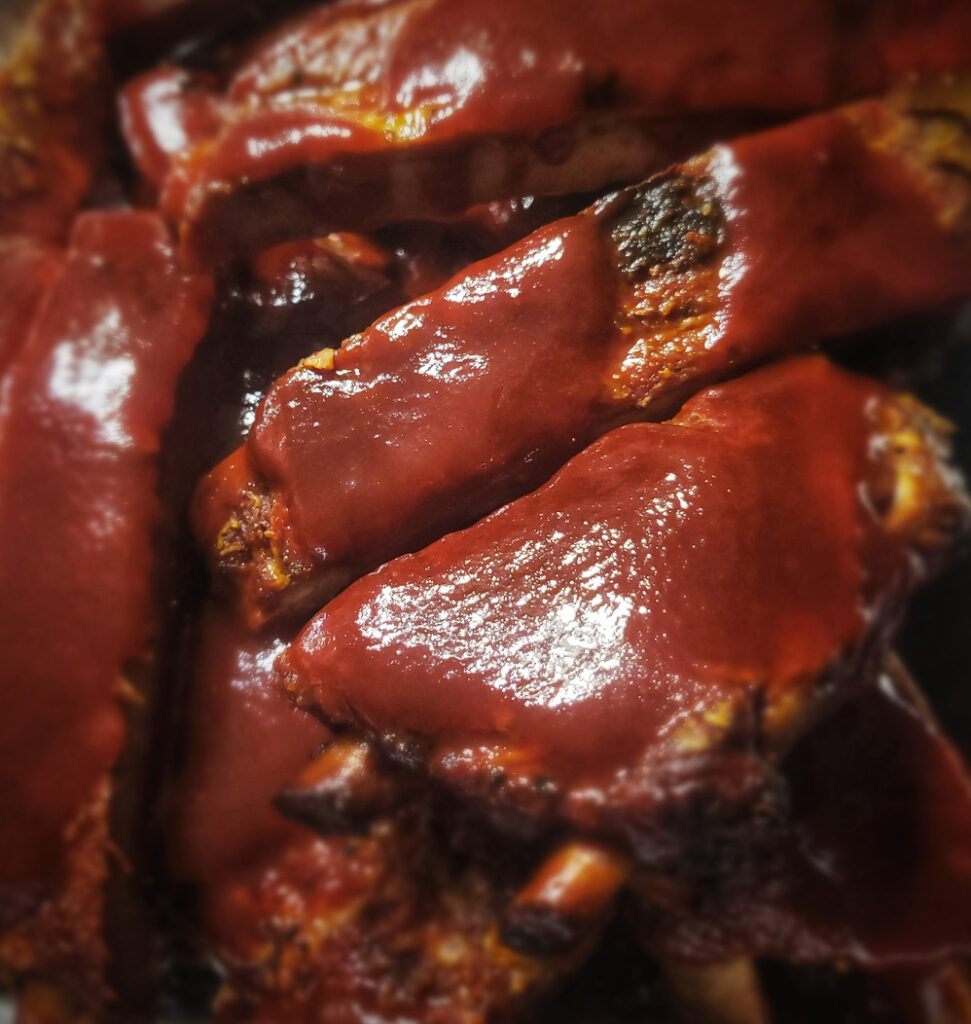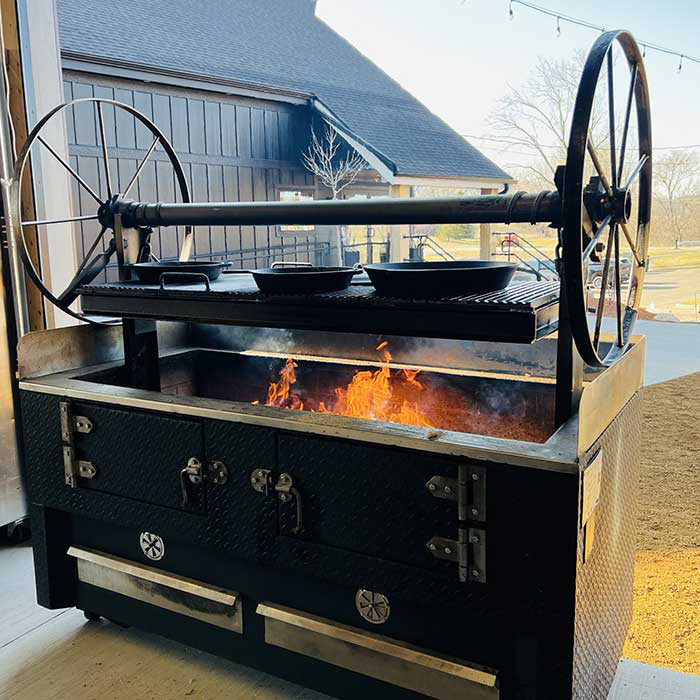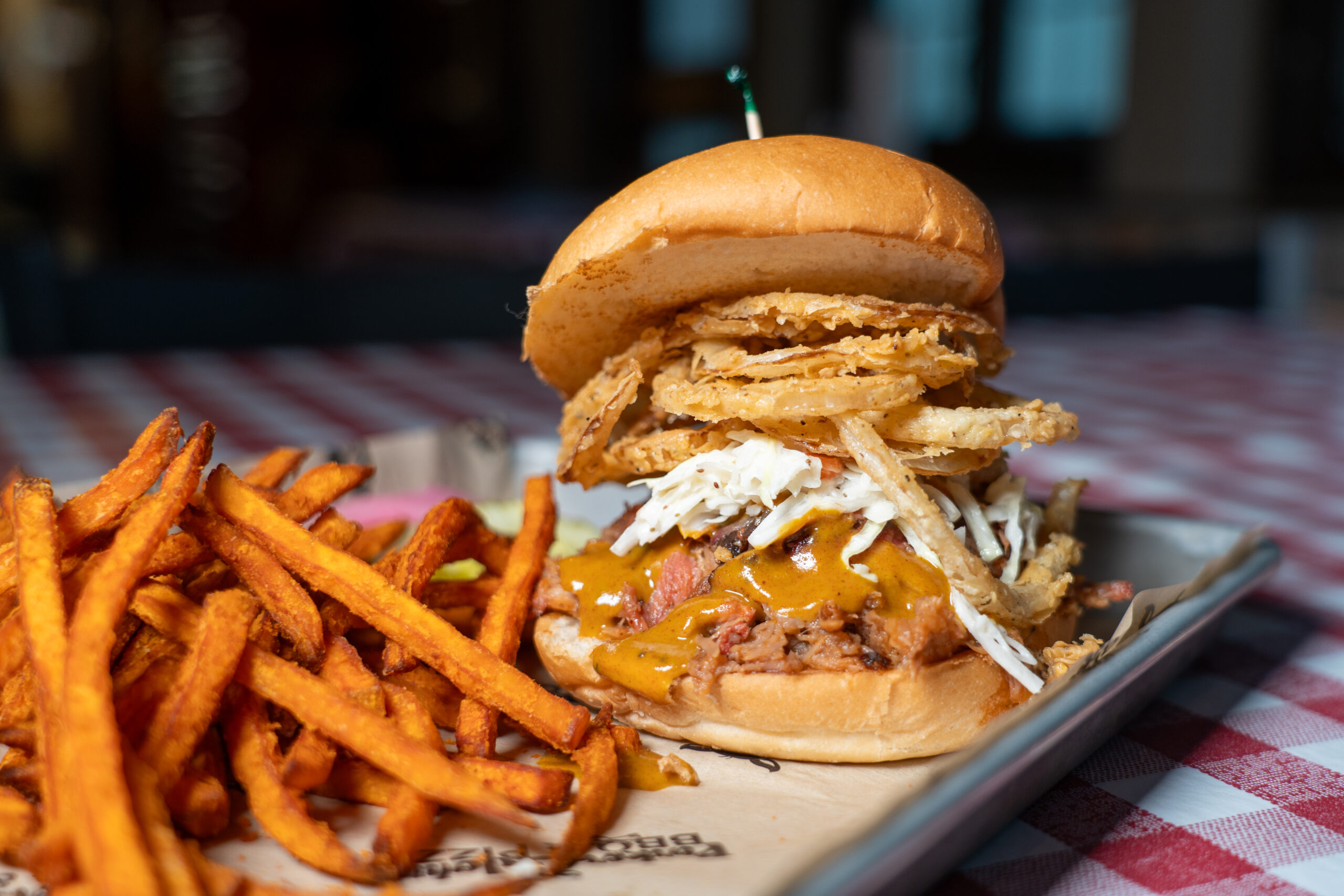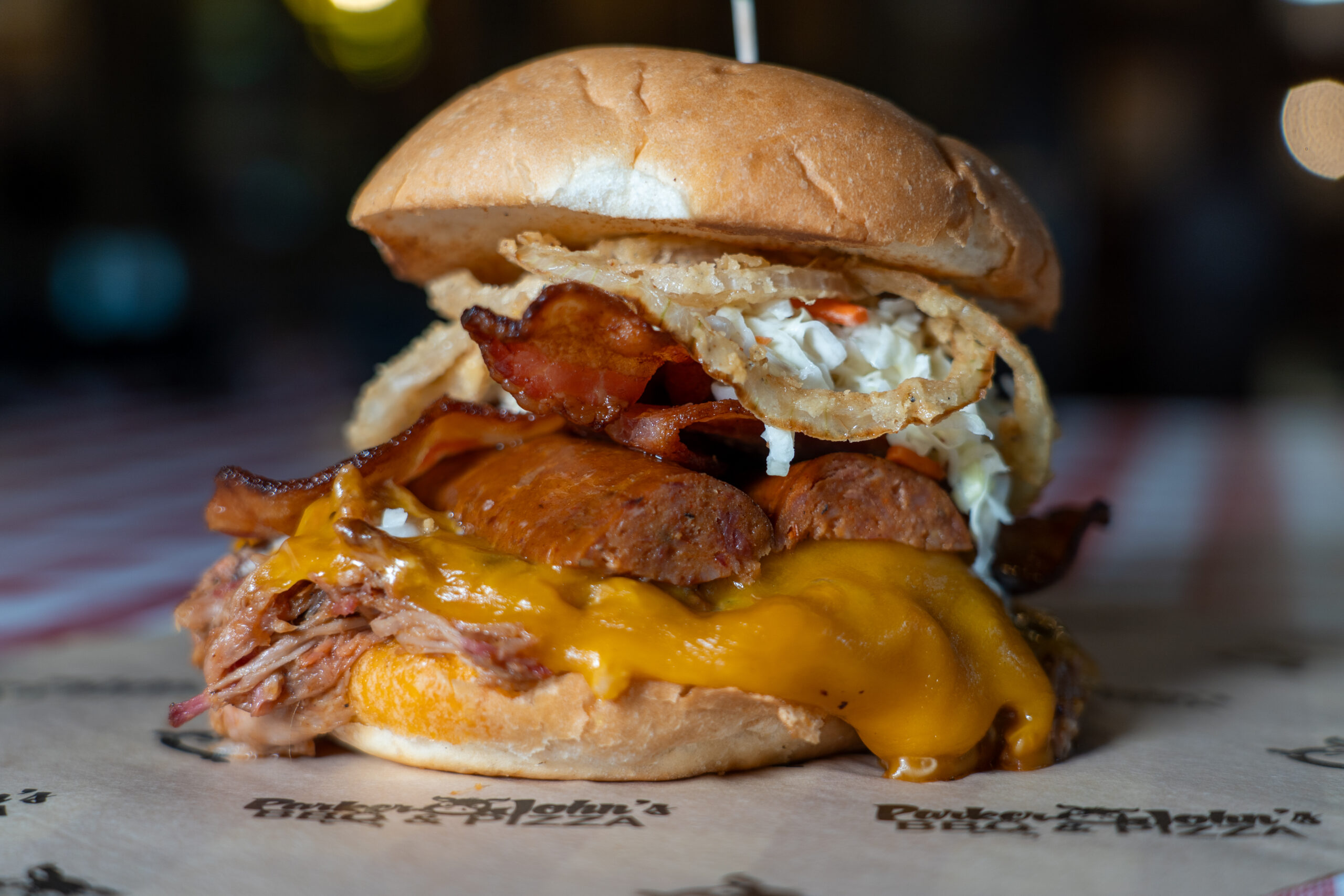Meats and More Smoked In-House

There’s nothing quite like the smoky goodness of BBQ wafting through the air. It’s a staple in summer, and not only beckons hungry guests from miles away but creates a delicious community.
From forums and websites to competitions and even television shows, when it comes to smoking meats, the industry is taking over the food scene.
And while it, and cooking in general, can be seen as science and chemistry, there’s also an art to “master” when it comes to smoking meats and producing great BBQ.
“There’s really no such thing as a pit ‘master’ because you’re always learning and asking ‘How can we make it better?’” Matt Cunningham, Pit Boss for Heritage 71 in Sherwood, says. “BBQ isn’t food; it’s an event, an experience. Come for that and stay for the food.”
The terms smoking and BBQ are not interchangeable but still often used in tandem. Essentially it’s cooking with fire, but the two use different techniques to accomplish their tasty goals.
According to www.thespruceeats.com, “In a nutshell, grilling means cooking over a fire, hot and fast. Barbecue means low and slow, and smoking means cooking something with smoke (also low and slow). Smoking and barbecuing, however, are all about the meat. It’s the low temperatures and long cooking times that help big, tough cuts of meat turn meltingly tender, and express their full flavors.

“Smoking is like the extreme version of barbecuing: you’re actually cooking the food with smoke from smoldering chunks or chips of hickory, mesquite, apple or cherry, each of which contributes their own flavor to the meat.”
The “Low and Slow” Smoking Philosophy
Our local BBQ connoisseurs say dedicating the time to make it right makes a difference, the “low and slow” philosophy ringing true. Don’t be surprised if there’s a wait time when it comes to fresh, high quality BBQ.
“Good BBQ just takes time. We slice each piece of meat to order, and we don’t overmake what we serve because we want it to be the freshest, highest quality every time,” Cunningham says. “We are only open Thursday to Sunday, but we start preparing everything Tuesday morning to create all the house made items we have on our menu.”
“Our smokers run 24/7,” Jordan Saunders, Manager at Parker John’s, adds. “While most people are sleeping, our meat is slowly soaking up that hickory smoke.”
When it comes to wood specifics, Wisconsin is known for its “hardwoods” like maple, oak, hickory and fruit trees. While Parker John’s uses hickory, Heritage 71 chooses maple, giving the area a sampling of both popular woods.
“We’ve used the same hickory supplier for over 15 years. Hickory gives our meats a bold, rich flavor that’s strong enough to stand up to big cuts like brisket and ribs, but still works beautifully with our pulled chicken or turkey. It’s reliable, hearty, and as much a part of our BBQ as the rub itself,” Saunders says.

“We smoke different meats in different ways,” Cunningham explains. “Brisket, ribs, pork butts and beef ribs are cooked on an offset smoker low and slow. Chicken and turkey are smoked on a direct fire smoker hot and fast. Each method provides their own unique flavors. We use maple wood as it provides a mild smokey flavor simulating a mild wood such as post oak which is used in Texas. Maple is the only wood we use as it is readily available in our area.”
Curating BBQ Flavors
While the smokers are undoubtedly the stars of the show, high quality cuts of meat and curating flavor combinations helps take our local BBQ to the next level.
“We take our time and let the smoke do the work,” Saunders says. “One of our core beliefs is that great meat doesn’t need to hide behind sauce. That’s why we serve everything naked (without sauce) including our ribs. Yes, that throws some guests off at first, but one bite into a slab of our pork back ribs and they understand why.
“We go through hundreds of thousands of pounds of meat every year. This is not a part-time gig. We season everything in-house with our own rubs, and every drop of our BBQ sauce is made right here. There’s a lot of love behind what ends up on your plate, whether it’s a single sandwich or The Meat Sweats.”
“We smoke everything in-house because BBQ isn’t just food, it’s a full-sensory experience. You can taste, smell and feel the difference when it’s done right. Smoking in-house gives us full control over the process: from the flavor to the tenderness to the moment that smoky aroma hits you as you walk in the door. It’s about crafting something memorable, not mass-produced.”

“There is no replacement for an offset smoker or direct fire smoker, you can not get these flavors any other way,” Cunningham agrees. “The smoke infuses into the meat and creates a bark of smokey goodness.”
“We smoke our meats in-house to create the flavors we believe the customers will enjoy!” Wes Karcheski, Meat Cutter/Sausage Maker/Beer Connoisseur at Nieumuth’s Southside Market in Appleton, chimes in. “We make our own rubs for our pulled pork, pastrami, ribs and smoked wings (really popular)! We do prefer the slow ‘n low method, usually topping out at 225 degrees!”
BBQ philosophies and styles differ, but one thing holds true: there’s room for everyone and every style.
Techniques and components range from temperature and wood to sauce and dry rubs. The style of barbecue indicates the region. Across the United States, the most well-known include Kansas City, Carolina, Memphis and Texas.
Kansas City: Sweet seasoning and slathered in a thick, sugary sauce. Kansas City style typically utilizes burnt ends, Kansas City bacon, ribs, brisket, pulled pork, chicken, and sausage.
Carolina: Slow-roasted whole hog and pulled pork shoulders barbecue using vinegar-based “mop sauce.”
Memphis: Slow-smoked, pulled, and served with a thin, tangy sauce on the side. Often includes wet ribs, dry ribs and pulled pork.
Texas: Oak-smoked brisket, sliced and served without sauce. Texas is known for brisket, beef ribs, pork ribs, and sausages.
Smoking Meat at Home

Patience is certainly a virtue when it comes to smoking meats commercially and at home. It’s our experts’ number one tip for creating the good stuff. Saunders explains the most important aspects of smoking meat:
- Patience. You can’t rush good BBQ.
- Consistency. Temps, wood, rubs, every detail matters.
- Humidity control. You need the right balance to keep meat moist and build a great bark.
- Internal temp over clock time. Meat tells you when it’s ready.
“(It’s) attention to detail. Even the small details make a difference,” Cunningham adds. “You need to take care of the bark that you work so hard to create. It is all about the care you put into every detail from trimming to plating.”
“Be patient. Do not place meat on the smoker immediately, wait 10 minutes to burn off ‘bad smoke,’” Karcheski recommends. “Wrap your meat in butcher paper and let it rest at least one hour after reaching desired temperature.”
